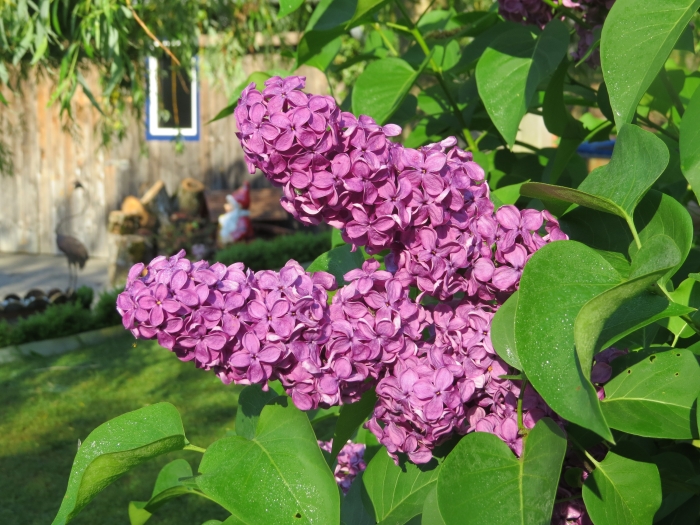Common Lilac
(Syringa vulgaris)
Common Lilac (Syringa vulgaris)
/
/

GT1976
CC BY-SA 4.0
Image By:
GT1976
Recorded By:
Copyright:
CC BY-SA 4.0
Copyright Notice:
Photo by: GT1976 | License Type: CC BY-SA 4.0 | License URL: https://creativecommons.org/licenses/by-sa/4.0 | Uploader: GT1976 | Publisher: Wikimedia Commons | Title: 2018-05-13_(139)_Syringa_vulgaris_(common_lilac)_at_Bichlhäusl_in_Frankenfels,_Austria.jpg | Notes: User created page with UploadWizard |




















































































Estimated Native Range
Summary
Syringa vulgaris, commonly known as Common Lilac, is a deciduous shrub native to the rocky hills of the Balkan Peninsula. It typically grows to a height of 12-15 feet and a width of 10-12 feet. The Common Lilac is known for its showy, fragrant flowers that bloom in spring, presenting a palette of colors including blue, cream, yellow, pink, purple, red, and white. The flowers are highly valued for their sweet scent and aesthetic appeal. This species is adaptable to a range of soil conditions, from well-drained to clay soils, and it thrives in full sun to light shade.
Common Lilac is celebrated for its beautiful blooms and is often used in gardens and parks as a specimen plant or in hedges and screens. It is also a favorite for cut flower arrangements. While it requires medium amounts of water, it is relatively low maintenance once established. However, it can be susceptible to powdery mildew and lilac borer. Gardeners should be aware that although it is not typically aggressive, Syringa vulgaris can become invasive in some regions outside its native range, and its status should be checked before planting.CC BY-SA 4.0
Common Lilac is celebrated for its beautiful blooms and is often used in gardens and parks as a specimen plant or in hedges and screens. It is also a favorite for cut flower arrangements. While it requires medium amounts of water, it is relatively low maintenance once established. However, it can be susceptible to powdery mildew and lilac borer. Gardeners should be aware that although it is not typically aggressive, Syringa vulgaris can become invasive in some regions outside its native range, and its status should be checked before planting.CC BY-SA 4.0
Plant Description
- Plant Type: Shrub
- Height: 12-15 feet
- Width: 10-12 feet
- Growth Rate: Moderate
- Flower Color: Purple, White
- Flowering Season: Spring
- Leaf Retention: Deciduous
Growth Requirements
- Sun: Full Sun, Part Shade
- Water: Medium
- Drainage: Fast, Medium, Slow
Common Uses
Bee Garden, Bird Garden, Border Plant, Butterfly Garden, Deer Resistant, Drought Tolerant, Erosion Control, Fragrant, Hummingbird Garden, Potted Plant, Rabbit Resistant, Showy Flowers, Street Planting
Natural Habitat
Rocky hills of the Balkan Peninsula
Other Names
Common Names: Purple Lilac, Lilac, Almindelig Syren, Gewöhnlicher Flieder, Pihasyreeni, Lilas Commun, Lilas Vulgaire, Lilla, Serenella, Syrin
Scientific Names: , Syringa vulgaris, Syringa vulgaris var. alba, Syringa vulgaris f. alba, Lilac vulgaris, Syringa lilac, Liliacum vulgare, Syringa rhodopea, Syringa vulgaris var. purpurea, Syringa bicolor
GBIF Accepted Name: Syringa vulgaris L.